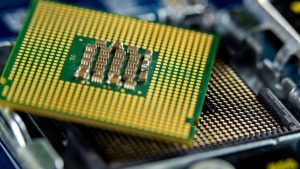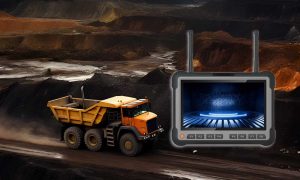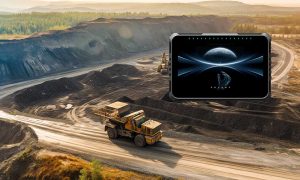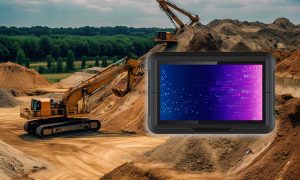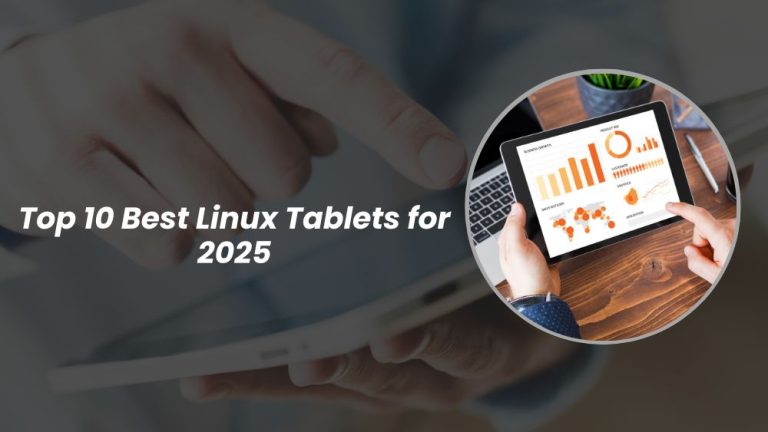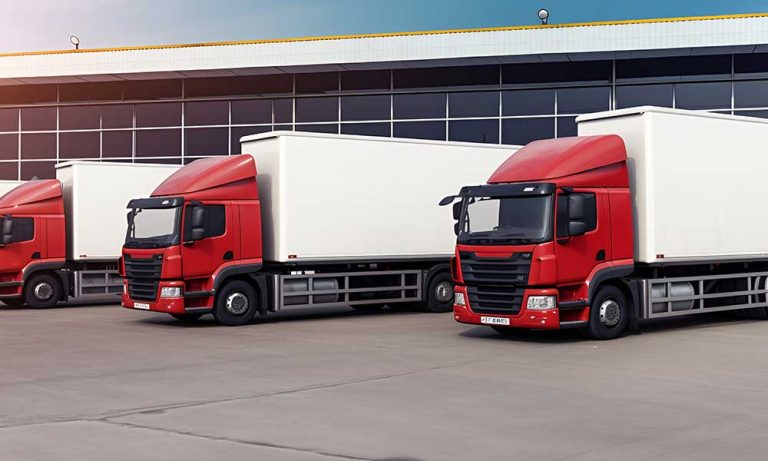As the mining industry continues to embrace technological advancements, the demand for specialized devices like mining tablets has surged. These rugged, durable tablets are designed to withstand the extreme conditions of mining environments while enabling workers to manage operations, track equipment, and maintain communication seamlessly. However, one crucial question that mining companies must address before investing in these devices is whether the mining tablet will be compatible with their existing software systems.
Software compatibility is essential to ensuring that new technology integrates smoothly with a company’s established infrastructure, preventing costly disruptions, and maximizing efficiency. In this article, we will explore the importance of software compatibility in mining tablets, the key factors to consider when assessing compatibility, and how mining companies can ensure that these devices will work seamlessly with their existing systems.
The Importance of Software Compatibility in Mining Tablets
Mining operations rely on a complex ecosystem of software systems to manage everything from resource tracking and equipment maintenance to worker safety and environmental compliance. These software systems are often the backbone of mining operations, ensuring that data is collected, analyzed, and used to make informed decisions. When integrating new technology, such as a mining tablet, ensuring that it is compatible with these systems is critical for several reasons:
1. Seamless Data Integration
Mining companies generate vast amounts of data daily, ranging from equipment performance metrics to geological data. For mining tablets to be useful in this environment, they must be able to integrate seamlessly with the existing data management systems. Whether the company uses an enterprise resource planning (ERP) system, a computerized maintenance management system (CMMS), or other specialized mining software, the mining tablet must be capable of syncing data in real time without manual intervention. Incompatible software can lead to data silos, inefficiencies, and even lost or inaccurate information.
2. Operational Continuity
A mining tablet that is incompatible with existing software systems can disrupt daily operations. For example, if a tablet cannot run the company’s scheduling or inventory management software, it may create gaps in communication and slow down production. Ensuring software compatibility helps maintain operational continuity by allowing workers to access the tools they need to complete tasks without interruption.

3. Reduced Training Costs
Introducing new technology into a mining operation often requires training staff on how to use the equipment and any associated software. However, if the mining tablet is compatible with the software workers are already familiar with, the training process becomes much simpler and faster. Workers can focus on learning how to use the tablet itself rather than having to learn an entirely new software system. This reduces training costs and accelerates the adoption of the technology.
4. Enhanced Productivity
A mining tablet that works smoothly with existing systems can significantly enhance productivity. Workers can access critical data, communicate with colleagues, and manage equipment more efficiently when all their tools are integrated. Software compatibility ensures that workflows remain streamlined, reducing delays and minimizing the risk of errors due to software conflicts.
Key Factors to Consider When Assessing Software Compatibility in Mining Tablets
To ensure that a mining tablet will work with your existing systems, it’s important to evaluate several key factors. These factors will help you determine whether the device can support the software your company relies on, whether through native apps, cloud solutions, or custom integrations.
1. Operating System Compatibility
One of the first factors to consider when assessing the software compatibility of a mining tablet is its operating system (OS). The most common operating systems for tablets are Android, linux. Each of these platforms offers distinct advantages and disadvantages, and it’s crucial to select a tablet with an OS that aligns with your company’s software infrastructure.
Android: Android-based mining tablets are popular for their flexibility and cost-effectiveness. Many mining applications are available on the Google Play Store, and custom apps can be developed for specific needs. Android tablets are also highly customizable, allowing for tailored solutions. However, it is important to ensure that critical mining software is compatible with the Android OS before making a purchase.
2. Cloud-Based Solutions
The shift toward cloud computing has revolutionized the way companies manage data and software applications. Cloud-based software solutions allow mining companies to access data and tools from any device with an internet connection, including mining tablets. One of the key advantages of cloud-based software is that it is often platform-independent, meaning it can be accessed via a web browser regardless of the tablet’s operating system.

When assessing software compatibility, it’s important to determine whether your company’s software can be accessed via the cloud. Many modern ERP systems, inventory management tools, and safety applications offer cloud-based versions, which can be easily used on mining tablets. This ensures that workers can access the same tools they would use on a desktop computer, but with the added mobility of a tablet.
3. Custom Software Development
In some cases, mining companies may require highly specialized software that isn’t readily available on the market. For these companies, custom software development may be necessary to ensure that the mining tablet is compatible with their existing systems. Fortunately, most mining tablets can be customized to run proprietary applications, provided that the tablet’s operating system supports the development tools needed for the software.
When considering custom software development, it’s important to work with a development team that has experience in the mining industry and understands the specific requirements of your operation. The tablet’s hardware specifications, such as processing power and memory, should also be taken into account to ensure that it can handle the custom software without performance issues.
4. Peripheral Compatibility
In addition to software, it’s important to consider the compatibility of the mining tablet with any peripheral devices that your operation uses. Many mining operations rely on specialized equipment such as RFID scanners, barcode readers, GPS units, and sensors to collect data in the field. The tablet should be compatible with these peripherals to ensure smooth data collection and transmission.
Modern mining tablets are typically equipped with various connectivity options, such as USB ports, Bluetooth, and NFC, to support a wide range of peripherals. Before purchasing a tablet, verify that it can interface with the peripherals your operation uses and that the software supports data input from these devices.
5. Security and Compliance
Mining companies often deal with sensitive data, such as proprietary geological information, safety records, and financial data. Ensuring that your mining tablet is compatible with your company’s security protocols is essential to protecting this information. The tablet should support encryption, secure login methods, and other security measures to comply with industry standards and regulatory requirements.
For companies operating in highly regulated environments, such as mining operations that must comply with environmental or worker safety regulations, software compatibility must extend to compliance management systems. The mining tablet should be able to run or integrate with software that helps manage compliance records and generate reports for regulators.
6. User Interface and Experience
While compatibility with existing systems is critical, it’s also important to consider how easy the mining tablet will be for workers to use in the field. Tablets with intuitive interfaces that mirror the software workers are already familiar with will reduce the learning curve and increase productivity. The mining tablet should support touch-screen functionality for the software you use, and its user interface should be optimized for both desktop and tablet experiences.
Steps to Ensure Software Compatibility with Mining Tablets
To ensure that the mining tablet you select will work with your existing systems, it’s important to follow a few key steps during the procurement and implementation process:
1. Conduct a Software Audit
Before investing in mining tablets, conduct a thorough audit of the software systems your company currently uses. Identify the critical applications that must be compatible with the tablet and make a list of their requirements, including operating system compatibility, cloud accessibility, and hardware needs. This will help you determine which tablet options are most likely to integrate seamlessly with your existing systems.
2. Test Compatibility Before Full Deployment
Whenever possible, request a demo or trial period for the mining tablet you are considering. Use this time to test the tablet with your existing software systems and peripheral devices. This allows you to identify any potential compatibility issues before making a full purchase and to work with the tablet manufacturer to address any concerns.
3. Consult with IT and Software Vendors
Work closely with your IT department and software vendors to ensure that the mining tablet you choose will be fully supported. Your software vendors may offer insights into which devices work best with their applications, and your IT team can provide recommendations on how to integrate the tablet with your infrastructure.
4. Plan for Software Updates and Maintenance
Software evolves over time, and it’s important to ensure that the mining tablet you choose will be able to accommodate future updates. Make sure the tablet’s operating system is upgradable, and that it has sufficient processing power and storage capacity to handle future software versions.
In an industry where efficiency, productivity, and safety are paramount, choosing a mining tablet that is compatible with your existing systems is critical to ensuring smooth operations. By carefully assessing operating system compatibility, cloud accessibility, custom software options, and peripheral support, mining companies can select tablets that integrate seamlessly with their current infrastructure.
With the right mining tablet, companies can unlock the full potential of their software systems, enhancing data collection, improving communication, and boosting overall productivity. By taking the time to ensure software compatibility, mining companies can avoid costly disruptions, reduce the need for extensive training, and ensure that their investment in technology yields long-term benefits.
In a rapidly evolving industry, mining tablets offer the mobility, ruggedness, and connectivity needed to stay ahead of the curve—provided they are compatible with the systems that drive your operation.




